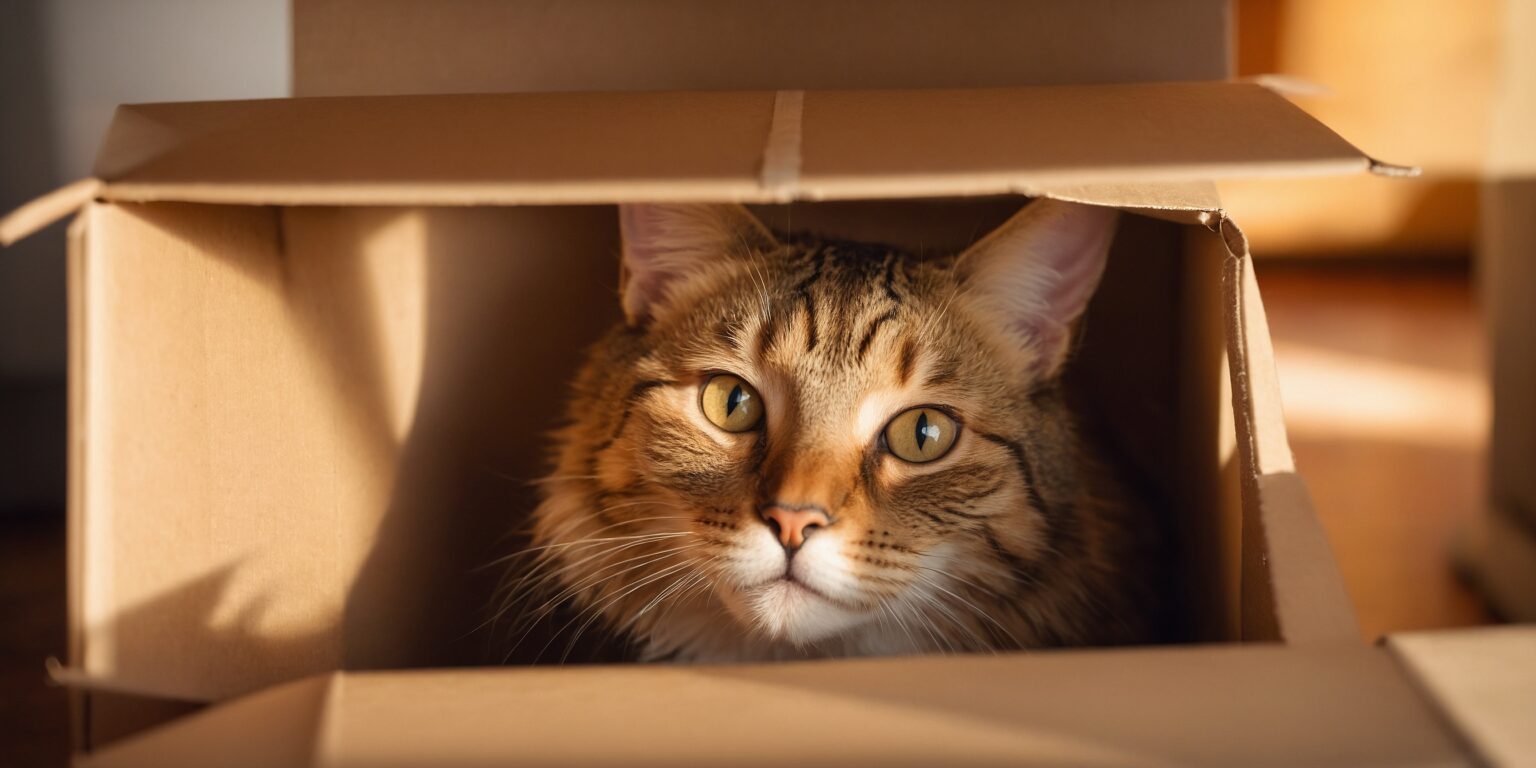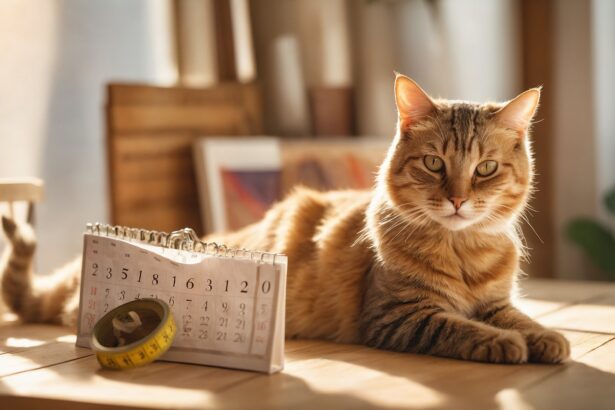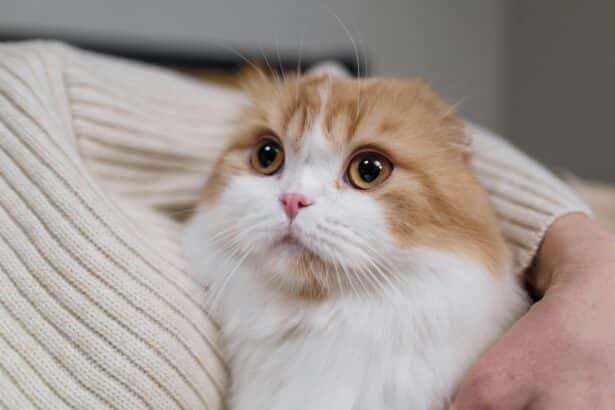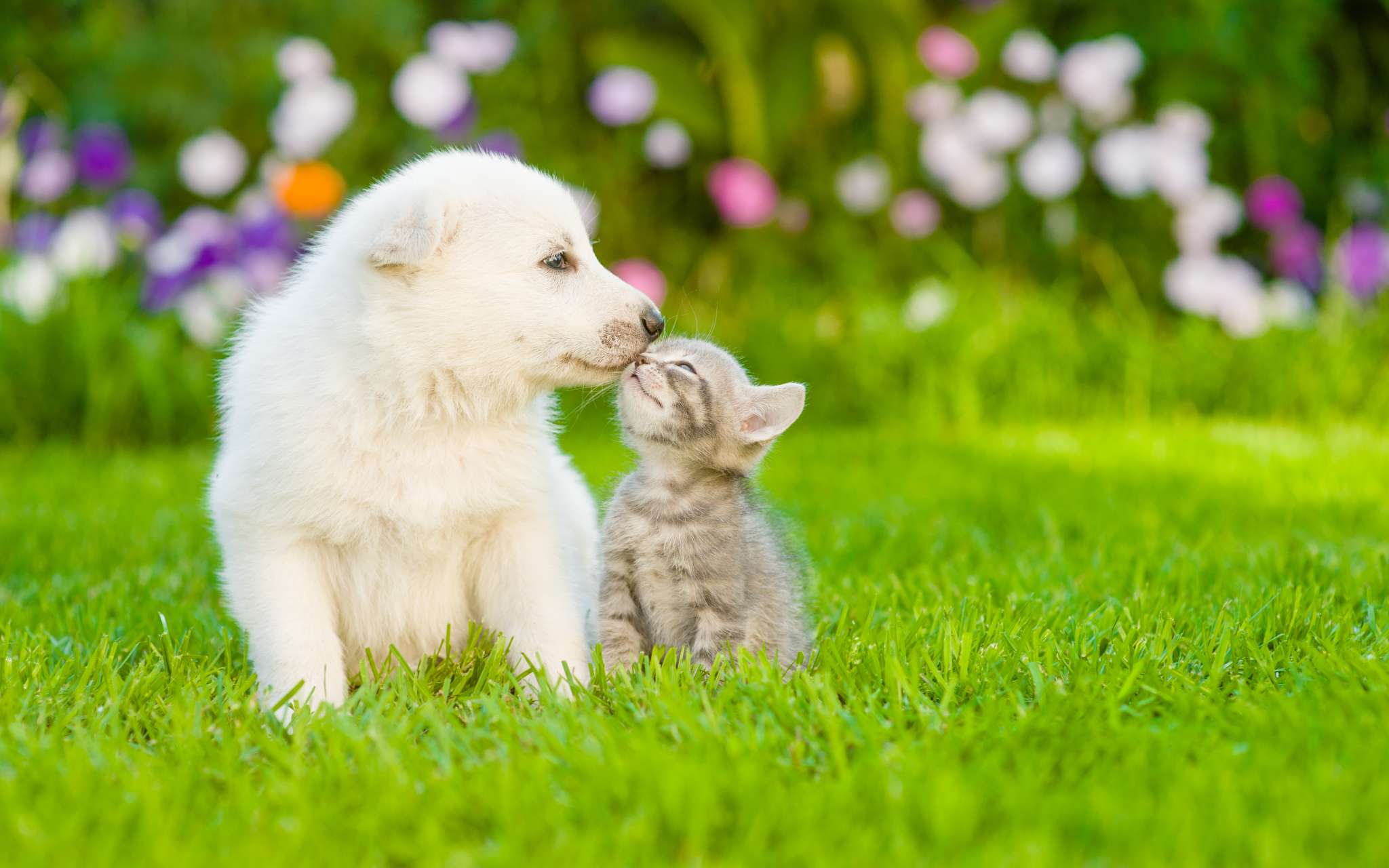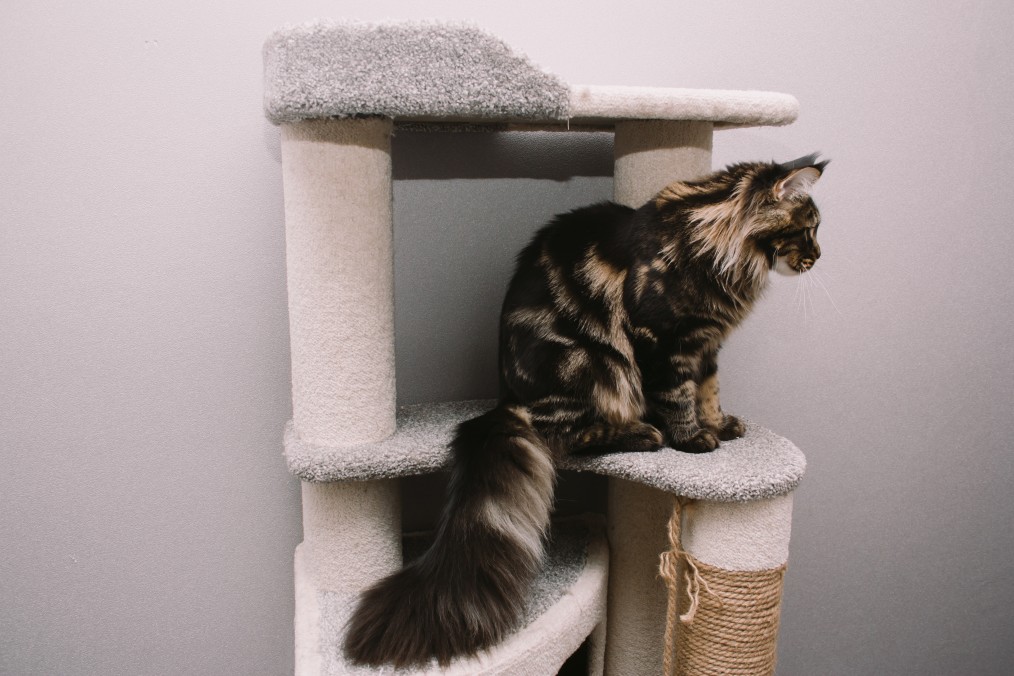Introduction: What does Schrödinger’s cat have to do with your sofa panther?
At first glance, the famous thought experiment Schrödinger’s cat and your fluffy roommate have little in common. One lives in physics books, the other in your laundry basket. Yet they share a delicious idea: things aren’t always just one way or the other.
Curious, cuddly, then suddenly aloof—your cat can feel like a walking paradox. Looking at her through a “quantum” lens won’t turn you into a physicist, but it can help you read her mood shifts with more kindness—and fewer scratches.
By the way, twilight ambushes on your ankles? They’re helped by kitty’s remarkable night vision. If you’ve ever wondered how cats see the world, you’ll love what their eyes can do.
The lesson behind Schrödinger’s cat
The thought experiment in plain English
Schrödinger imagined a sealed box where a cat could be both “alive and not alive” until someone looks. It’s a metaphor for quantum superposition—multiple possibilities existing at once before observation.
In everyday life, it simply nudges us to remember: we don’t see everything at once, and our point of view can shape what we notice.
A gentle reminder: metaphor, not a manual
No real cats were boxed for science class. The idea was meant to sound absurd. Take it as a playful reminder to stay open-minded about what your cat might be feeling, moment to moment.
And that’s where it gets interesting for us, devoted can-openers.
Your cat, seen through a kinder “quantum” lens
Cuddly and aloof at the same time? It tracks
Your cat can hover between multiple “states”: playful, sleepy, observant, overstimulated. Which one you meet depends on when—and how—you approach her.
Think of it like opening the “box” with care. Slow blink, soft voice, a hand to sniff, and space to choose. You’re not deciding her mood; you’re inviting the one that’s ready to show up.
- Watch the tail: upright with a curl = friendly; fast swish = too much, slow down.
- Follow the ears: forward = curious; flattened = back off, queen of the castle needs space.
- Read the whiskers: forward = engaged; relaxed = neutral, fine to greet.
If the next moment she’s kneading your sweater and purring like a tiny engine, that’s another state entirely. Wonder what kneading is all about? It’s sweeter than it looks.
Do choices come from her or her environment?
Both—your cat is gloriously independent and exquisitely sensitive to context. Lighting, noises, scent changes, even your posture can tip the scales toward cuddle or “not today.”
Practical tip: Try the “3-3 slow-blink ritual.” Slow blink, count to 3, offer your hand to sniff, count to 3, then pet once and pause. This respectful rhythm often invites longer, happier cuddles.
Common mistake to avoid: Pushing on when she stiffens or swishes her tail. She wasn’t “being moody”; she was signaling “I’m full.” Respecting that signal builds trust—and prevents love bites.
Those adorable rumbles that follow a good greeting? Here’s what purring can mean, beyond pure bliss.
Making better decisions together
Use the mindset to read your cat’s “many possibilities”
- Offer choices: two nap spots, two toy types, a hidey-hole and a high perch. Cats relax when they can pick.
- Time your invites: Play before meals to tap into hunting cycles; then serve dinner. It satisfies instinct and reduces post-bedtime zoomies.
- Shrink the ask: One short pat, then wait. If she leans in, you’ve got the green light.
- Reset the scene: Soft music, warm light, familiar scents. Tiny changes can flip “nope” to “yes.”
Fun fact: Cats’ eyes have a mirror-like layer (tapetum lucidum) that boosts low-light vision—which is why they’re so lively at dawn and dusk. If crepuscular zoomies are a thing at your place, a short play session before bedtime helps.
While you fine-tune her routine, a steady meal rhythm also calms behavior. Peek at our gentle tips for feeding your cat without the drama.
When the “paradox” gets prickly
If the switch from purr to swipe feels sudden, signs were likely there. Micro-signals can be quick: ear angles, a single tail flick, a tiny head turn away.
Capture those signals early and you’ll avoid most misunderstandings. No need to decode quantum mechanics—just your cat’s elegant language.
- Pause when the tail accelerates.
- Stop if she freezes or stares hard.
- Try a toy to redirect energy instead of hands.
If nights are the talkative hours in your home, these insights on night-time meows can help you both sleep better.
Conclusion: A kinder way to see your cat
Schrödinger’s famous feline won’t teach physics to your kitty, but it offers a lovely reminder: your cat is many possibilities in one whiskered package. Meet her where she is, and the sweetest version tends to appear.
With small, respectful choices, you’ll turn “paradox” into partnership—one slow blink at a time.
FAQ
Is Schrödinger’s cat a real experiment?
No. It’s a thought experiment designed to highlight the oddness of quantum theory. No actual cat was used.
Does my observation really change my cat’s behavior?
Not in a quantum way, but your approach, timing, and body language absolutely influence how she responds to you.
Why does my cat switch from cuddly to nippy?
Often overstimulation. Watch for early signs—tail swish, tense body—and take brief cuddle breaks to prevent love bites.
How can I encourage more cuddle time?
Invite gently, offer choices, and keep sessions short at first. A calm play-then-food routine also makes snuggle time more likely.


